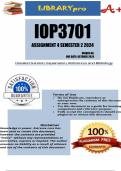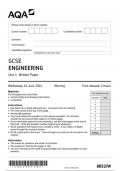Summary
Summary Notes essential for achieving A/A* in WJEC A Level CS Unit 3 Exam
- Module
- Institution
These notes are essential for achieving an A/A* in the WJEC A Level Computer Science Unit 3 exam. They cover key topics such as data structures, algorithms, programming principles, databases, and system analysis. The notes provide clear explanations, examples, and important definitions, ensuring a ...
[Show more]












